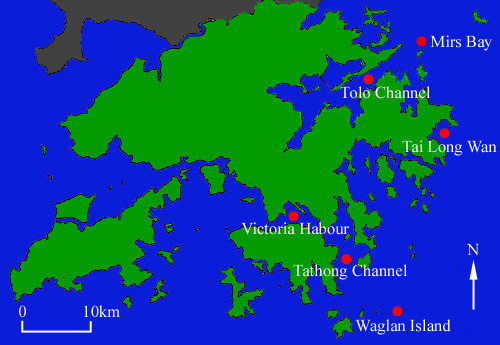Materials and Methods
Polychaetes can be found in marine sediments. In this project, marine sediments were collected from 5 locations (Fig.1) in Hong kong in August 1999. The marine sediments were collected from sea bottom by a 0.05 m2 van veen grab (Fig. 2 and 3). A fishing boat (Fig. 4) was hired for visiting the grab locations and operating the grab.
The grab samples (Fig. 5) collected were treated immediately on board. The sediments were washed through a sieve of 1 mm and 0.5 mm respectively (Fig. 6). The fauna and sediment residues retained (Fig. 7) were fixed in 4 % formalin in seawater. All the sieved samples were brought back to the laboratory.
¡@
In the laboratory, the sieved samples were washed in freshwater to remove formalin. The faunal samples were sorted under a stereo microscope and the animals were preserved in 70% ethanol. The polychaetes in the sorted samples were identified at least to the family level. The webpage design was on the basis of the sedentary polychaetes collected from the grab locations. The specimens of sedentary polychaetes were photographed under a stereo microscope using a CCD camera with the aid of the computer software called Metamorph. |
|||||||||||||||||||||






